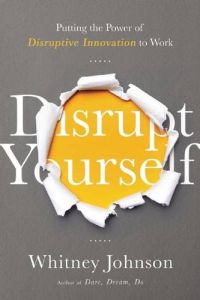Join getAbstract to access the summary!

Join getAbstract to access the summary!
Whitney Johnson
Disrupt Yourself
Putting the Power of Disruptive Innovation to Work
Bibliomotion, 2015
What's inside?
Disruption doesn’t only happen to markets. You can disrupt yourself and your career.
Recommendation
Analyst Whitney Johnson applies Clayton Christensen’s concept of “disruptive innovation” to individual careers. She uses this idea to offer metaphorical lenses that enable you to see your career with new eyes. Johnson's advice on how to innovate will help you take responsibility for redefining your professional path, however, deliberately disrupting yourself could reshape your career, so your path may look quite different if you undertake her approach. Her guidebook will help readers who are seeking new perspectives on their careers and meaning in their work.
Summary
About the Author
Institutional Investor-ranked analyst Whitney Johnson co-founded Rose Park Advisors and wrote Dare, Dream, Do: Remarkable Things Happen When You Dare to Dream.

















Comment on this summary